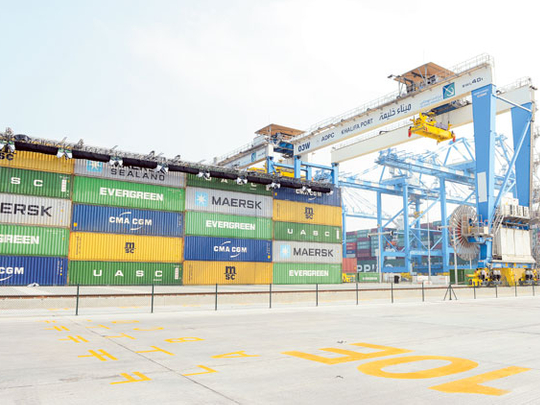
Dubai: The International Monetary Fund (IMF), Institute of International Finance (IIF), global credit rating agencies and a number of independent research organisations have revised upwards the growth forecast of the UAE this year, reflecting the improved fundamental strength of the economy.
While the IMF has forecast a GDP growth of 4 per cent for 2013, the IIF sees the country’s economic growth exceeding 4.7 per cent this year.
“We have raised our growth forecast on a higher than expected oil output during the first 3 quarters of this year. Additionally all leading economic indicators such as oil prices, purchasing managers index (PMI), growth indicators in private sector point to a strong underlying growth,” said Garbis Iradian, deputy director, Africa and the Middle East at the IIF.
In the beginning of the year Emirates NBD had forecast a 3.8 per cent GDP growth for 2013. However after taking into account the data for the first 9 months the bank’s economists revised the growth forecast to 4.4 per cent
“Non-oil private sector growth has accelerated, in line with our expectations. The PMI data has been consistently higher this year, and encouragingly, the strength is not just from export orders, but from recovering domestic demand,” said Khatija Haque, Head of Mena Research at Emirates NBD.
Latest real GDP estimates for the emirate of Abu Dhabi suggest that overall UAE growth may be revised upwards as Statistics Centre Abu Dhabi reported real GDP growth for the emirate at 5.6 per cent in 2012. With Dubai’s real growth last year at 4.4 per cent, this suggests overall UAE growth of just over 5 per cent in 2012.
Budget surplus
In its latest Article IV report on the UAE, published over the summer, the IMF estimates a budget surplus of more than Dh120 billion (8.6 per cent of GDP) in 2012, compared with the previous forecast of Dh67.7 billion (5.2 per cent of GDP). The IMF estimates a surplus of Dh111.5 billion (7.9 per cent of GDP) for 2013.
Analysts say the UAE’s non-hydrocarbon sector will increasingly drive economic growth in the future. “We expect the UAE’s real non-hydrocarbon growth to average 4.8 per cent in 2013-15 on the back of a renewed investment drive; accelerated population growth; dynamic demand from GCC neighbours; and a stable domestic political environment,” said Thomas J. Byrne Senior Vice President — Manager at Moody’s.
The non-oil sector has developed rapidly and has overtaken the oil sector as the main contributor to real GDP growth in the past decade. The UAE’s openness and ease of doing business has helped this development. The UAE ranks 19th out of 148 countries in the World Economic Forum’s Competitiveness Index, making it the second most competitive country in the Middle East region after Qatar.
Moody’s recently affirmed the country’s foreign and local-currency government issuer ratings at Aa2 with a stable outlook. The UAE’s credit rating is among the highest in the Gulf Cooperation Council (GCC), along with those of Kuwait and Qatar.
Growth in the non-oil sector has limited the UAE’s dependency on oil to a greater degree than Qatar and Kuwait. The UAE’s non-oil sectors include wholesale and retail trade (11 per cent of GDP), manufacturing, real estate and construction (9 per cent of GDP each) and transport, storage and communication (8 per cent of GDP).
Order intakes
The PMI data for November shows the UAE’s non-oil private sector reported a sharp rise in activity, as new orders expanded at the fastest rate in the survey history. The rate of growth in new export business also jumped to a record high.
November saw the sharpest increase in order intakes since data collection began in August 2009. “The reading is impressive, but not unexpectedly so. With the announcement that Dubai will host Expo 2020, and improved sentiment around the geopolitical situation, there is ample reason to believe that the strong performance seen in the UAE in 2013 will continue into 2014,” said Liz Martins, Senior Economist at HSBC.
Economists say the overall outlook for the UAE is positive as the economy has made a steady and strong recovery after the challenges it faced a couple of years ago. “The theme in 2014 is managing growth dynamics. Non-hydrocarbon factors have been the primary drivers of the economy in 2013. In the capital, Abu Dhabi, there has been a strong pick-up in government spending. In Dubai, the core sectors of trade, services and tourism are performing robustly as the Emirate receives dividends from its position as hub to the fast-growing GCC region,” said Shady Shaher, an economist with Standard Chartered.












